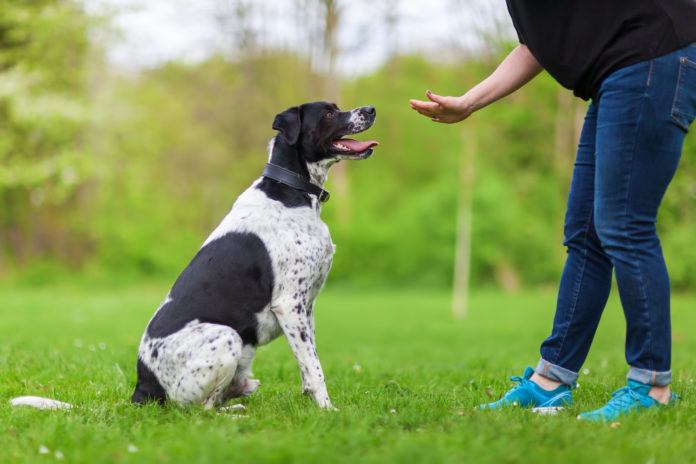Beyond Obedience: Why Your Dog Needs Behavioral Training Too

Obedience training and behavioral training are distinct types of teaching, and pet parents who want well-rounded, well-behaved dogs that are happy, calm, and relaxed must focus on both.
Obedience training has long been synonymous with “dog training,” but it’s not the only form of training your pup needs. In fact, equating the two could explain why so many pet parents struggle with dog behavior. We welcome dogs into our homes, enroll them in an obedience class—and then stop there. Imagine sending a human child through a semester of school and thinking they were set for life!
Dogs need both obedience and behavioral training. Both styles speak to and develop different (and important) aspects of the dog, including their mental, emotional, and social states.
Obedience Training Is Brain Training
Obedience training speaks to the mental aspect of your pup. When communication is clear, your dog will attach meaning to verbal cues and directives. “Sit” = rear end on the ground. “Down” = belly on the ground. “Come” = come to me from wherever you are, and so on.
A dog understanding a verbal cue is one thing, but compliance is another. To get both, you also need to understand and possibly work on:
- The relationship between you and your dog, including:
- The level of trust and respect (usually, it’s not the trust factor that’s lacking in many dynamics as much as it is the respect factor)
- Your level of relevance according to your dog
- What you represent to the dog. Are you someone who’s consistently stressed, frustrated, anxious, impatient, on edge, etc. or calm, grounded, collected, and confident?
- Your dog’s individual drive, which can include pack, prey, and defense (measured in terms of low, medium, or high)
- How well your dog understands what you tried to teach them
- Whether you built up your dog’s ability to perform certain actions depending on the location and level of distraction
Behavioral Training is “Real World and Functional” Training
Behavioral training is the umbrella compliance falls under. It speaks to the emotional and social aspects of your dog.
Behavioral training includes behavioral conditioning, prevention, modification, and rehabilitation. Behavioral conditioning and prevention stop problematic behaviors from arising, while behavioral modification and rehabilitation address problematic behaviors if they do arise. With these types of training, you can condition your dog’s:
- Self and world perception through building confidence, advocacy, and exposing them to various elements, environments, people, etc.
- State of mind (conditioning calm vs. arousal and excitement. Arousal and excitement are states of mind many condition unknowingly)
- Comfort level sharing public, social, personal, and intimate spaces
Behavioral training for dogs equips them to make choices and teaches them how to respond to any given context or circumstance without the need for our direct influence. Obedience teaches them what to do when cued, while behavioral training teaches them what to do and how to be without being cued.
Dogs don’t come to us pre-programmed, so we must learn what our dogs need to feel safe, confident, and secure in their own skin, under our guidance and care, and out in the real world. Obedience and behavioral training work together to nurture and condition balanced, well-rounded dogs with healthy perspectives.




